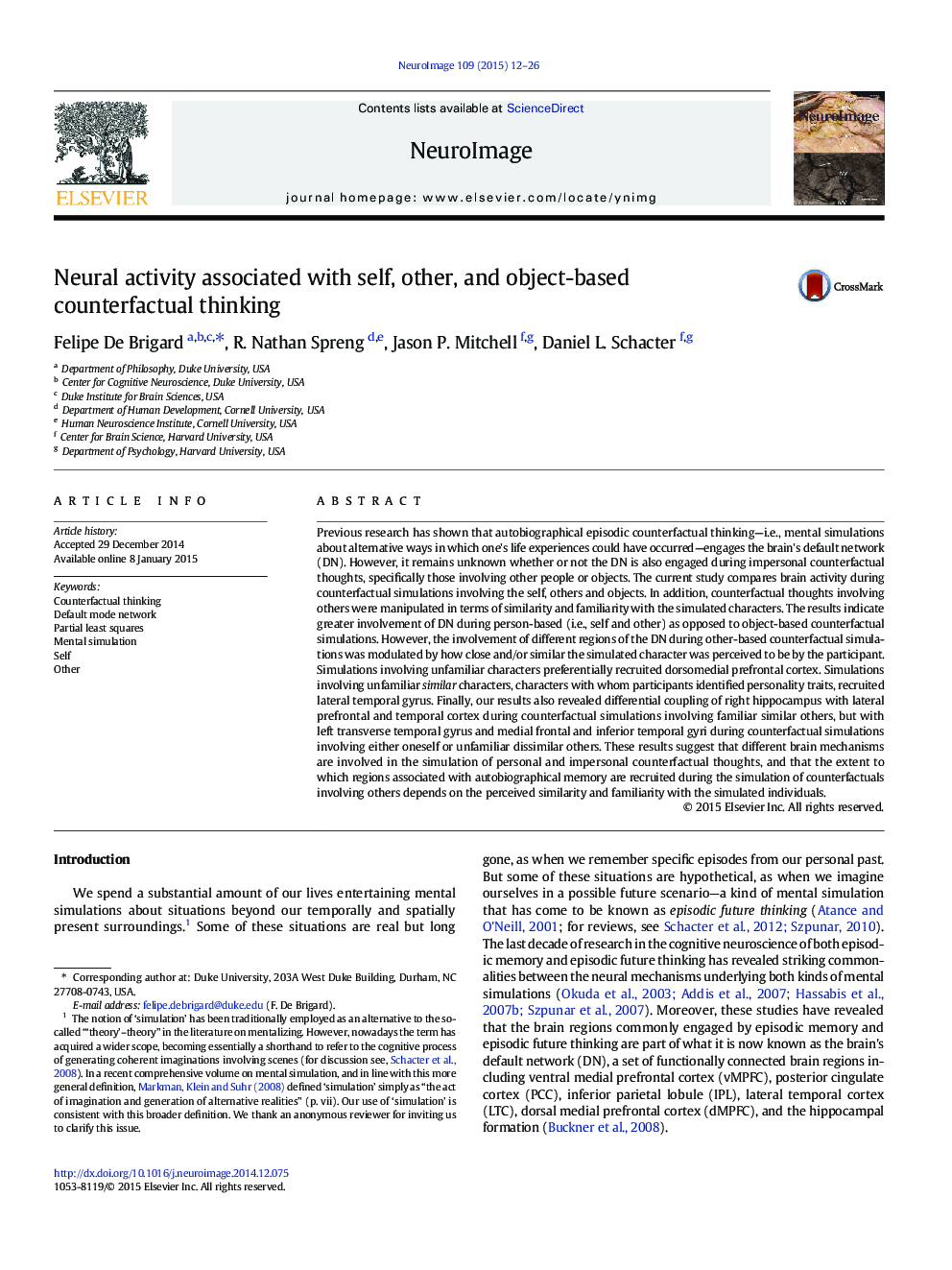| کد مقاله | کد نشریه | سال انتشار | مقاله انگلیسی | نسخه تمام متن |
|---|---|---|---|---|
| 6025575 | 1580898 | 2015 | 15 صفحه PDF | دانلود رایگان |
- Default network (DN) engagement in personal vs impersonal counterfactual thoughts is explored.
- DN was engaged during person but not object-based counterfactual simulations.
- Familiarity, similarity modulated involvement of DN during self and other-based counterfactuals
- Different functional connectivity patterns for familiar and unfamiliar other-based counterfactuals
Previous research has shown that autobiographical episodic counterfactual thinking-i.e., mental simulations about alternative ways in which one's life experiences could have occurred-engages the brain's default network (DN). However, it remains unknown whether or not the DN is also engaged during impersonal counterfactual thoughts, specifically those involving other people or objects. The current study compares brain activity during counterfactual simulations involving the self, others and objects. In addition, counterfactual thoughts involving others were manipulated in terms of similarity and familiarity with the simulated characters. The results indicate greater involvement of DN during person-based (i.e., self and other) as opposed to object-based counterfactual simulations. However, the involvement of different regions of the DN during other-based counterfactual simulations was modulated by how close and/or similar the simulated character was perceived to be by the participant. Simulations involving unfamiliar characters preferentially recruited dorsomedial prefrontal cortex. Simulations involving unfamiliar similar characters, characters with whom participants identified personality traits, recruited lateral temporal gyrus. Finally, our results also revealed differential coupling of right hippocampus with lateral prefrontal and temporal cortex during counterfactual simulations involving familiar similar others, but with left transverse temporal gyrus and medial frontal and inferior temporal gyri during counterfactual simulations involving either oneself or unfamiliar dissimilar others. These results suggest that different brain mechanisms are involved in the simulation of personal and impersonal counterfactual thoughts, and that the extent to which regions associated with autobiographical memory are recruited during the simulation of counterfactuals involving others depends on the perceived similarity and familiarity with the simulated individuals.
Journal: NeuroImage - Volume 109, 1 April 2015, Pages 12-26
